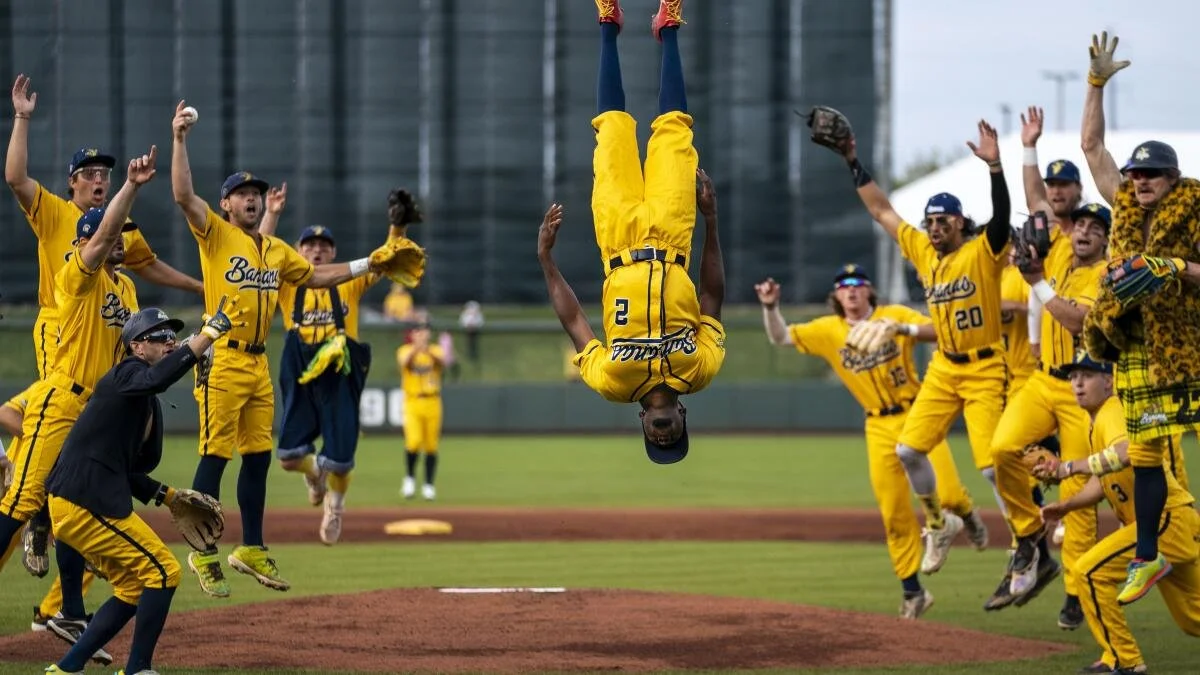Rewriting the Fundraising Playbook: Lessons from the Savannah Bananas
For decades, Major League Baseball had an iron grip on the sport. Then came the Savannah Bananas in 2016, with a bold strategy: if you can’t beat the big leagues, reinvent the game. Their mix of fast-paced play and entertainment now sells out stadiums, commands millions of social media followers, and recently landed them their first TV streaming deal.
Nonprofits, facing one of the toughest fundraising climates in years, should take a page from the Bananas’ playbook: to stay relevant, you need to stand out and take risks. With Americans donating less and more nonprofits than ever competing for support, the need to revise the playbook and embrace innovation has never been more urgent. What the Bananas are doing for baseball, nonprofits must now do for fundraising.
Individual giving has been declining, with no signs of stopping, for several years. Even adjusting for inflation, total donations are falling. Moreover, the funds that are being donated are increasingly concentrated among a small group of affluent individuals. Some in philanthropy have labeled this moment a “generosity crisis,” with twenty million fewer households donating to charities in 2016 than in 2000. Factors like economic uncertainty, donor fatigue, and the increasing number of organizations competing for this same shrinking pool of donors have only compounded the challenges.
Savannah Bananas player pitching while on stilts
While both the amount of money being donated, and the number of people giving, is waning, the number of nonprofits needing their help continues to grow. In fact, the United States has seen a steady rise in registered nonprofits, with over 1.5 million currently in operation. This surge has created a highly competitive landscape that some have referred to as the “nonprofit Hunger Games,” where organizations must find new ways to stand out and secure support amidst dwindling resources.
Nonprofits are battling for attention in a crowded field, with donors bombarded by endless requests via email, social media, and direct mail. Old tactics won't cut it anymore. To stand out, nonprofits must embrace bold strategies and innovate. The key question is: How can we deliver real value, create memorable experiences, and truly engage supporters to inspire their giving?
The Savannah Bananas is the only baseball team I know of that features hilarious, over-the-top player dance numbers throughout the game, so that, for the fans, at any point something delightful might happen. So how might a nonprofit do that? Some recent examples are instructive. Last year, United Way Niagara decided to personally thank their donors on Giving Tuesday, instead of hitting them up for donations with all the other nonprofits. This surprise act of gratitude resonated deeply and, ultimately, led to unexpected donations and renewed connections.
Savannah Bananas players dancing in sync.
The Library of Congress did something similar during the famously expensive advertising frenzy of Superbowl 58. Their witty social media posts about being “$6,999,999 short” of a Superbowl Ad sparked viral attention, garnering over a quarter of a million impressions and nearly 7,000 likes, living longer in the popular imagination than many of the $7 million advertisements that aired at the same time. In both cases, a bold departure from the expected brought fresh interest while renewing and deepening the connection with supporters.
At Major League Baseball (MLB) games, a constant complaint from fans is the skyrocketing prices for water, alcohol, and food. When you come to Bananaland, your experience is all-inclusive. With tickets starting at $35 per person, fans in Savannah enjoy all-you-can-eat options, including hotdogs, hamburgers, chicken sandwiches, water, soda, popcorn, and cookies. This approach stands in stark contrast to the traditional fundraising gala, where donors often feel that the value of their experience doesn’t match the hefty price tag. I recall one longtime donor at a former nonprofit, who had supported the organization for nearly two decades, responding to a gala invitation with an email that read, “So, you want me to pay over $1,000 to eat another rubber chicken dinner at Cipriani?” This disconnect between cost and value raises a critical question: How can we reimagine the traditional gala model to make it more inclusive and engaging for all donors? Some nonprofits are exploring anti-gala models where attendees pay less, dress down, and enjoy live music and dancing. Others are moving beyond the gala entirely, opting for events like adult spelling bees, trivia nights, or even immersive experiences with virtual reality. These innovative approaches not only offer better value but also create a more memorable and inclusive experience, attracting a broader range of supporters.
Savannah Bananas players celebrating a win.
Another way the Bananas innovate is by centering the fan experience. They have completely removed corporate ads from their stadiums in order to focus on the fans. Doesn’t that sound great? Nonprofits could do something similar by remembering to pay attention to their loyal donors instead of fixating on what Mackenzie Scott or Mike Bloomberg could do for them, if they could just get their attention. Handwritten thank-you notes, personalized emails, and unexpected tokens of appreciation are small gestures that can have a lasting impact on building deeper relationships. Focus on nurturing the long-standing supporters who have consistently shown up for your cause. These are your nonprofit’s biggest fans, and keeping them engaged is key to long-term success.
Nonprofits must follow the example of the Savannah Bananas if they want to survive in today’s fundraising environment. Innovation is no longer optional- it’s the only way to stand out and capture the hearts (and wallets) of donors. By taking bold strategies and putting donors at the center of the experience, nonprofits can transform fundraising from a transactional effort to a lasting partnership. It’s time to reimagine not just what fundraising looks like, but what it feels like for supporters. It’s time to rewrite the fundraising playbook and reimagine what’s possible.




